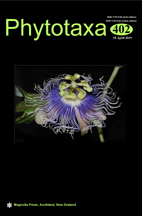Abstract
The neotropical species Spigelia anthelmia L. was firstly collected from China. Morphological characters are described and photographed in detail for further taxonomic identification. The species has become an invasive species in tropical Asia already, but not dispersed to the local ecosystem in Hainan yet, probably because of the short time of naturalization.

